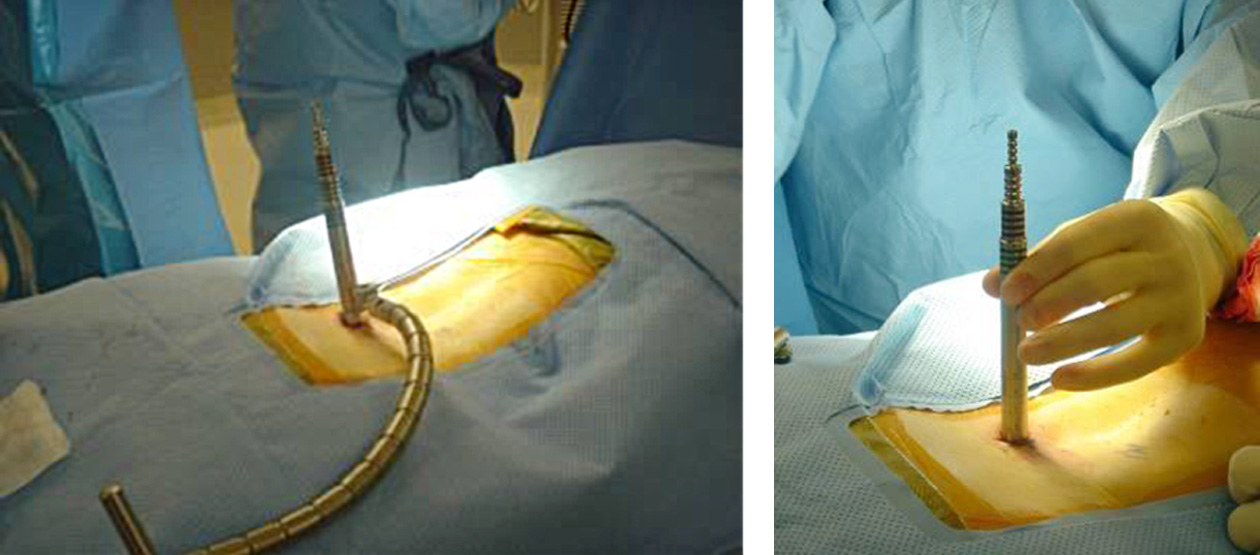Minimally Invasive Spinal Surgery
Mininmally Invasive Surgery (Key Hole Surgery) is concept that is gaining traction in the world of spine surgery. Whilst a consensus definition remains elusive, the ultimate aim of minimally invasive surgery is to minimize the surgical footprint, consequently decreasing post operative pain and allowing expeditious recovery. In order for minimally invasive surgery to be successful, the surgical goals; decompression of neural elements and stabilization of diseased segments remain unchanged.
Microdiscetomy
This surgery is performed through a one inch incision in the back. The herniated disc fragments are removed to relieve external pressure on the nerve . Patients are encouraged to commence the rehabilitation process as early as 4 hours after surgery.
Transforaminal Lumbar Interbody Fusion (TLIF)
This surgery involves parallel incisions roughly half to one inch in length. The spinal column is approached without disruption of the adjacent musculature. Decompression and stabilisation are achieved without undue retraction of neural elements
Minimally Invasive Posterior Instrumentation
This technique involves two half-inch incisions. Pedicle instrumentation is inserted, without disruption of the spinal musculature, conferring stability of the spinal column.
Lateral Interbody Fusion
This surgical technique involves a 2 inch incision in the flank. The spine is approached through the psoas muscle. Due to the proximity of nerves subserving function to the lower limb, electrophysiological monitoring is employed during these cases. Studies have demonstrated high fusion rates as well as an ability to decompress nerves.
Anterior Lumbar Interbody Fusion (ALIF)
This technique has evolved as one of the predominant surgical technique in the treatment of discogenic back pain . This technique involves an incision about 3-4 inches in length in the front of the abdomen. the abdominal contents are gently retracted to facilitate access to the spinal column. This technique has the advantage of high fusion rates and preserving the muscles which stabilize the spinal column.
